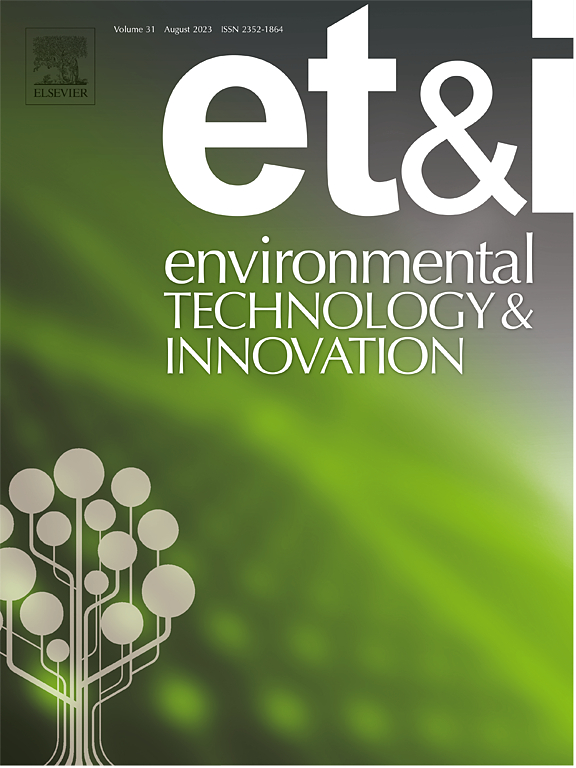Effects of cations and nanoparticles on the antibiotic-resistance gene transformation of Escherichia coli at different time scales
IF 6.7
2区 环境科学与生态学
Q1 BIOTECHNOLOGY & APPLIED MICROBIOLOGY
引用次数: 0
Abstract
Antibiotic resistance genes (ARGs) can be horizontally transferred when bacterial cells take up environmental DNA and gain the antibiotic resistance, a process referred to as transformation. This study investigated the effects of two major cations (monovalent Na+, divalent Ca2+) and two representative organic (polystyrene nanoparticles, PSNP) and inorganic (silver nanoparticles, AgNP) nanoparticles, on the natural transformation of E. coli. In nanoparticle-free systems, both Na+ and Ca2+ promoted transformation. The effect was stronger at higher ion concentration and in Ca2+ than in Na+. Ion-induced plasmid conformation change, reduced electrostatic interaction, and cation bridging (for Ca2+) were identified as dominant mechanisms leading to the increased plasmid uptake and transformation, despite decreased membrane permeability. Interestingly, AgNP and PSNP exhibited time-dependent, opposing roles in transformation. At 1.5 hours, AgNP promoted transformation by increasing membrane permeability, while PSNP inhibited it by binding plasmids and preventing uptake. However, over 24 hours, these effects reversed: AgNP inhibited transformation due to accumulating toxicity of dissolved Ag+, whereas PSNP enhanced transformation by increasing membrane permeability through PSNP accumulation. These findings underscore the complex, material-specific, and time-dependent influences of nanoparticles on bacteria transformation, revealing their potential environmental and health implications.
不同时间尺度下阳离子和纳米颗粒对大肠杆菌耐药基因转化的影响
当细菌细胞吸收环境DNA并获得抗生素抗性时,抗生素抗性基因(ARGs)可以水平转移,这一过程称为转化。本研究考察了两种主要阳离子(一价Na+,二价Ca2+)和两种具有代表性的有机(聚苯乙烯纳米粒子,PSNP)和无机(银纳米粒子,AgNP)纳米粒子对大肠杆菌自然转化的影响。在无纳米粒子体系中,Na+和Ca2+都促进了转化。Ca2+离子浓度越高,效果越明显。离子诱导的质粒构象改变、静电相互作用减少和阳离子桥接(Ca2+)被认为是导致质粒摄取和转化增加的主要机制,尽管膜通透性降低。有趣的是,AgNP和PSNP在转化过程中表现出时间依赖性,相反的作用。在1.5 小时,AgNP通过增加膜通透性来促进转化,而PSNP通过结合质粒和阻止摄取来抑制转化。然而,在24 小时后,这些作用发生逆转:AgNP由于溶解Ag+的累积毒性而抑制转化,而PSNP通过PSNP积累增加膜通透性来促进转化。这些发现强调了纳米颗粒对细菌转化的复杂、材料特异性和时间依赖性影响,揭示了它们潜在的环境和健康影响。
本文章由计算机程序翻译,如有差异,请以英文原文为准。
求助全文
约1分钟内获得全文
求助全文
来源期刊

Environmental Technology & Innovation
Environmental Science-General Environmental Science
CiteScore
14.00
自引率
4.20%
发文量
435
审稿时长
74 days
期刊介绍:
Environmental Technology & Innovation adopts a challenge-oriented approach to solutions by integrating natural sciences to promote a sustainable future. The journal aims to foster the creation and development of innovative products, technologies, and ideas that enhance the environment, with impacts across soil, air, water, and food in rural and urban areas.
As a platform for disseminating scientific evidence for environmental protection and sustainable development, the journal emphasizes fundamental science, methodologies, tools, techniques, and policy considerations. It emphasizes the importance of science and technology in environmental benefits, including smarter, cleaner technologies for environmental protection, more efficient resource processing methods, and the evidence supporting their effectiveness.
 求助内容:
求助内容: 应助结果提醒方式:
应助结果提醒方式:


